
THE SPLENDIDLY NAMED Basil de Burgh Newth was part of a small group of mainly young men who, at the end of the 19th century, lived year-round on mainland Australia’s highest point – Mt Kosciuszko, in New South Wales, where a weather station had been established by colourful meteorologist Clement Wragge. From 1897 to 1902 the group sent regular weather records to Wragge and the experience remained with Newth for life – he spent 27 months at the top of Australia, but was still writing about it 50 years later, saying he was “well repaid in interest, experience and adventure… One could write a book about it all.” Born in England, Wragge was dynamic and unconventional and, in 1881, he established a weather observatory on Britain’s highest peak, Ben Nevis, on behalf of the Scottish Meteorological Society. He also established a comparative sea-level station at Fort William nearby. The principle of this work was that forecasts could be aided by making and comparing ‘upper’ atmosphere studies (through simultaneous readings of instruments) with the findings of the sea-level station. British scientists welcomed the results and Wragge was awarded a gold medal by the Society.
Wragge then came to Australia and, in 1887, he became Queensland’s Government Meteorologist, establishing a network of weather stations and publishing Australia-wide forecasts. He furthered the study of tropical cyclones and began the practice of naming them, as we do today.
Wragge wasn’t a typical Victorian-era man. Vegetarian, interested in eastern religions, with green environmental views, he stood out from a 19th-century crowd. This lack of orthodoxy, plus his outspokenness and lack of tact, often put him at odds with his intercolonial peers.
This story is from the July - August 2024 edition of Australian Geographic Magazine.
Start your 7-day Magzter GOLD free trial to access thousands of curated premium stories, and 9,000+ magazines and newspapers.
Already a subscriber ? Sign In
This story is from the July - August 2024 edition of Australian Geographic Magazine.
Start your 7-day Magzter GOLD free trial to access thousands of curated premium stories, and 9,000+ magazines and newspapers.
Already a subscriber? Sign In

SULAWESI SENSATIONS
There are worlds within worlds and marvels untold waiting to be experienced on Indonesia's remote islands.
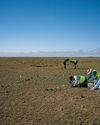
SEARCHING FOR AUSSIE DINOSAURS
Our understanding of where to find ancient life in Australia has been turned on its head by a new appreciation of the country's geology. Now the world is looking to our vast outback as the latest hotspot to locate fossils.
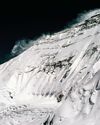
THE HARDEST NIGHT
The first Australian ascent of Mt Everest in 1984 is one of the great feats of mountaineering. Climbed by a small team semi-alpine style, with no bottled oxygen, via the Great (Norton) Couloir, it remains unrepeated 40 years later.
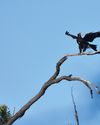
WEDGE-TAILED WONDER
The chance discovery of an eagle nest leads to an extended vigil observing normally hidden behaviours of one of nature's supreme winged marvels.
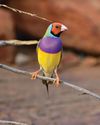
BURDENED BY BEAUTY
Northern Australia's Gouldian finch survives in huge numbers in cages around the world, but its wild population continues to struggle.
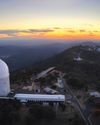
A TELESCOPE FOR A GOLDEN AGE
After a stellar 50 years as one of the country's major scientific assets, the AAT continues to play a major role in keeping Australian astronomy on the world stage.
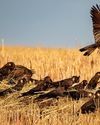
COCKY WHISPERING AT COOMALLO CREEK
This patch of remnant bush on the edge of the West Australian wheatbelt is a place loved by one of Australia's rarest bird species and the man who has studied the site for more than 50 years.

A PIONEERING PAIR
Louisa Atkinson and her mother, Charlotte, were among Australia's earliest authors, and pioneers in women's rights.
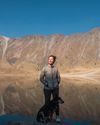
THE LONGEST WALK
Lucy Barnard is walking from Argentina to Alaska -the length of the Americas - on an extraordinary journey of endurance and adventure.
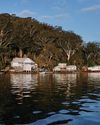
SECLUDED, BUT NOT ALONE
In an era of heightened social isolation, where many of us lead lonely lives, Dangar Island offers the chance to be part of a supportive, connected community.